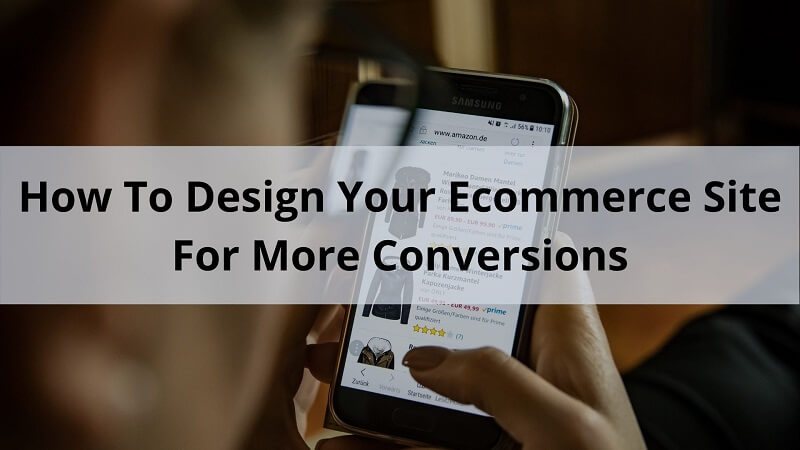
Hey, do you want to know how to design your eCommerce site for more conversions? Then, keep reading.
To generate revenue from an e-commerce store, you need to have the right balance of traffic, average order value, and conversion rate. All three factors are highly significant, but the most inexpensive way to increase your revenue is to improve your conversion rates. This means that once potential customers visit your site, they are more likely to purchase your products. This, in turn, greatly depends on the design, navigation, image quality, engaging videos, and convenient checkout processes.
Read on to learn how to design an eCommerce site that will encourage the highest conversion rates possible.
1. One-Click Checkout
A number of eCommerce website designers need to pay more attention to the importance of having a simple, user-friendly checkout. Yes, the Add to Cart button is also important, but it is only really necessary for large websites with an extensive inventory. In the beginning, products are easy to track on a simple website, so it is better to take the customer straight to the checkout point instead of delaying the process without redirecting the customer to a new page. A one-click checkout button that leads directly to the payment processing page can be very effective. After order completion of a user, you can create a professional order confirmation email template.
2. Offer A Variety Of Payment Methods
PayPal and Stripe operate in a limited number of countries, mainly across Europe and North America. Customers in many other parts of the world need access to these payment methods. Provide your customers with additional yet convenient options such as Payoneer and Skrill, as well as credit and debit card payment options.
3. 360o View
Make sure to upload display images from different sides so that the users can check the product out from all directions. It is also important to use a scale or a size reference to give buyers a clear idea of the dimensions. Amazon seller tools are a great option for those using Amazon, but eCommerce stores on other platforms need to create their own features. Showcase products with maximum visual details using dynamic image processing techniques and tools that allow the viewers to rotate and spin the image. This will allow them to look at the product just as if it were in their hands.
4. Upload How-To Videos
If the concept is new or the product needs assembly after the unboxing, it is a good idea to upload a How-To video to make the potential buyers feel more comfortable with the product. These videos not only tell potential customers how to use products but also give them a dynamic picture of how they work. Take your time with the video. Divide its content into easy-to-follow steps. Buyers are always interested in watching the product operate, even if it is nothing new.
5. Optimise For Mobile
With users relying more and more on their smartphones, mobile optimization for eCommerce websites is more critical than ever. Do your best to keep the navigation as simple as possible since visitors hate switching between screens when using a smartphone. Avoid making them tap again and again to reach checkout. When designing the mobile version of your eCommerce website, make sure to translate the layout by highlighting the most important elements.
6. Use High-Quality Images
The size of the images you use is fine as long as you keep it consistent. On the other hand, image quality is of the utmost importance. Zooming in has become an automatic action for most online shoppers, so poor image quality often annoys potential buyers. This single issue is often the decisive factor that keeps conversion rates low.
Additionally, remember to keep the background clean. People often retouch images, but instead of investing time and effort, they simply remove the dust particles. Use a neat and aesthetically appealing background for your pictures. Finally, try to capture images in daylight, if possible, instead of using flash or artificial light.
7. Make Sure Product Categories Are Accurate
As your store grows, make sure to put the right products in the right categories. It is also best to display the top-selling products above other items. While doing this, always remember to push the Sold / Out of Stock items down to the bottom of the list. Don’t forget to create a separate collection/category for new arrivals. Sometimes, new items are hard to find if you do not update the order of display.
What Is A Good Conversion Rate For An eCommerce Site?
The average conversion rate for most eCommerce websites is only around 1%. This means that if your website is getting 10,000 visitors a month, you can expect 100 sales. However, an impressive site can achieve higher conversion rates of around 3% to 5%. This means that the same website with convincing design features will generate 300 to 500 sales per 10,000 visitors!
So that’s all from this article. Also, if you like this article on designing your eCommerce site to increase conversions, please share it with your friends and social media followers.

